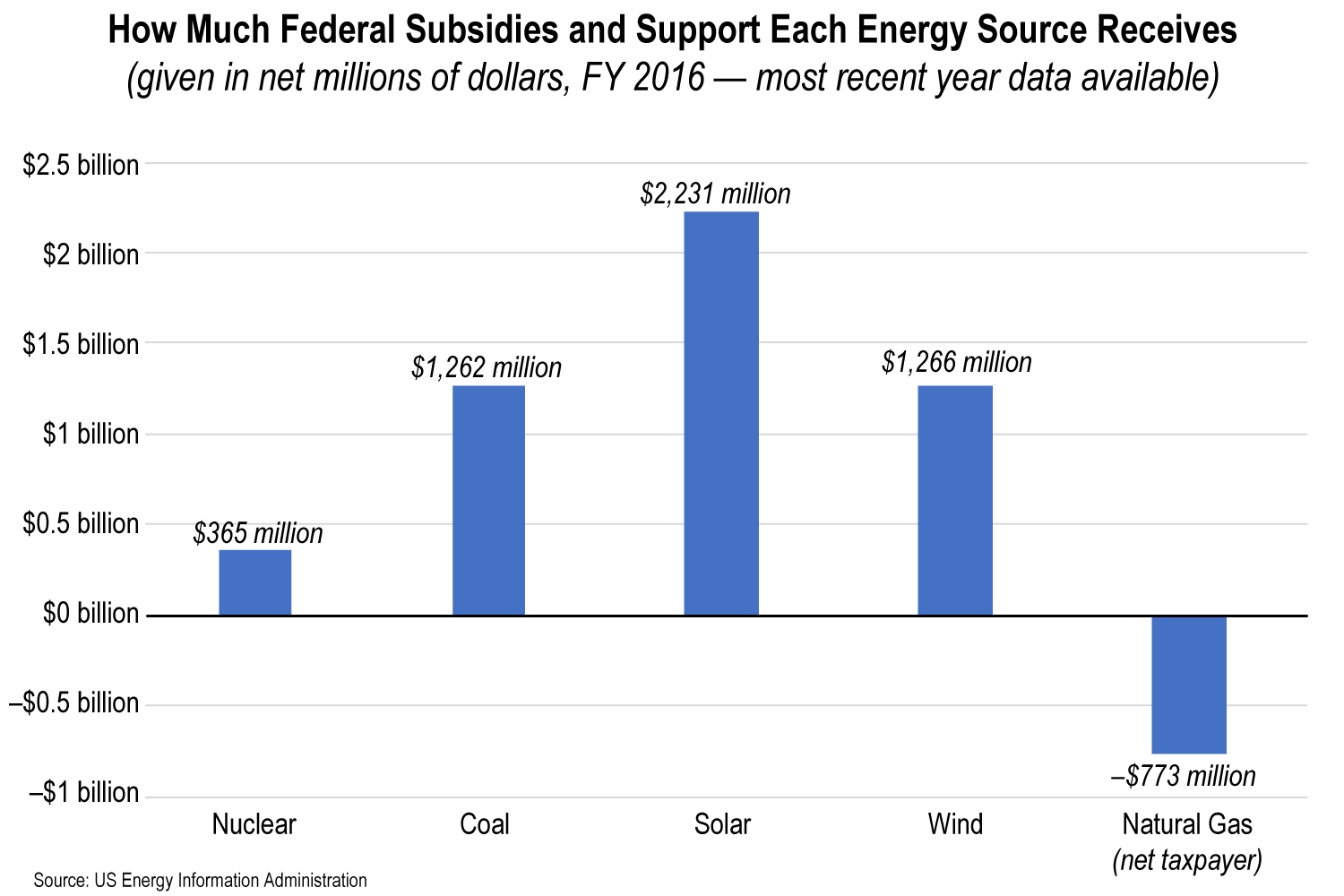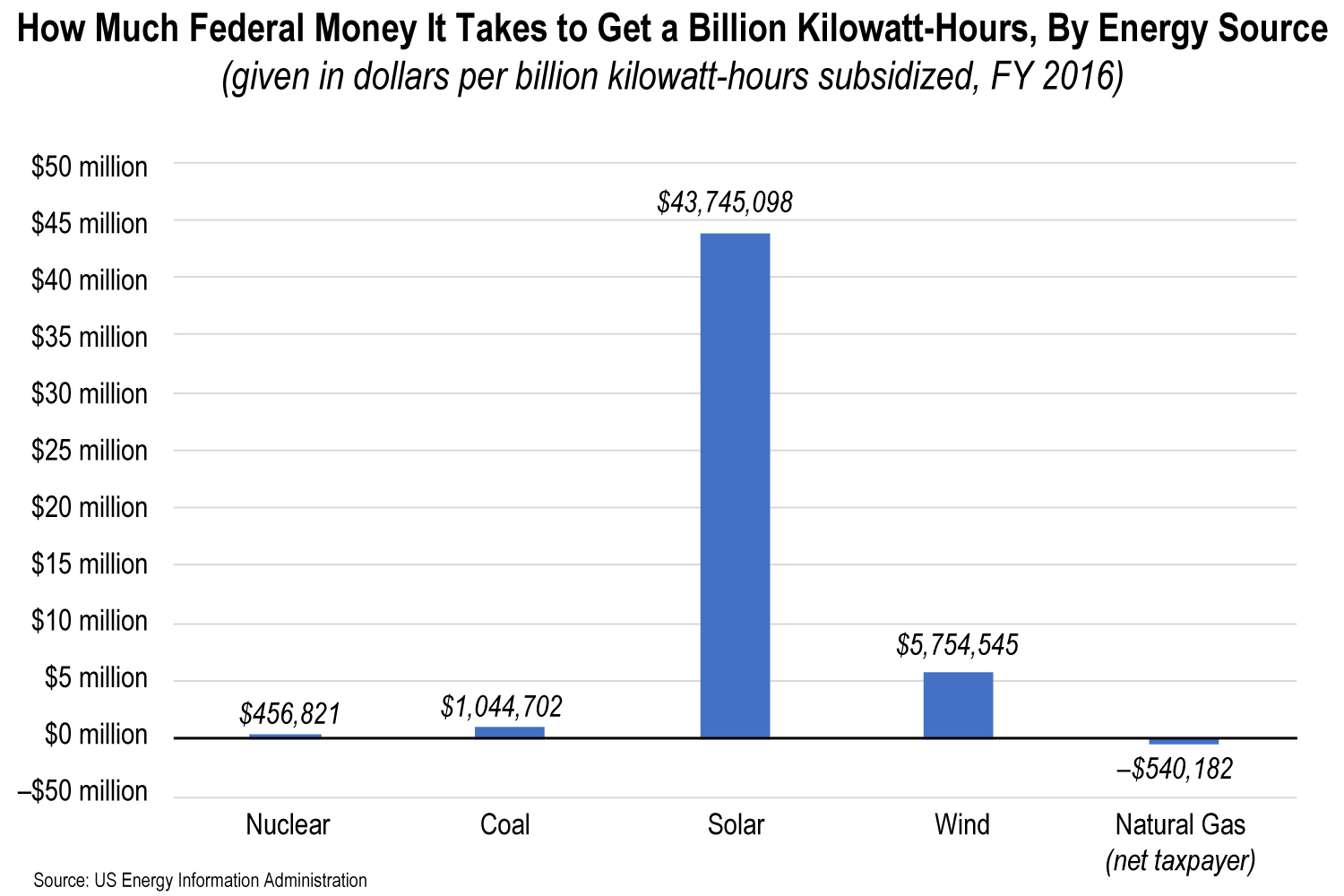- With zero emissions, unrivaled reliability, and lowest costs, existing nuclear power checks all the boxes for what different people want from electricity
- Losing nuclear power has been shown to increase prices, cause grid instability, and even endanger lives
- While Gov. Cooper’s “Clean Power Plan” seeks “nuclear generation replacement,” Pres. Biden recently signaled support for keeping nuclear plants operating
For something that is an essential human need, electricity invites a great deal of political activity. Advocates for the poor urge for prices to be as low as possible. So do small businesses and industrial users. State law expects it to be least-cost and reliable. Families do, too; they want to make sure they have access to power whenever they need it and not have to worry about rolling blackouts. People concerned about the environment want to limit emissions and lessen its impact on nature.
In a rare feat in politics, all those disparate wants converge on one source: nuclear power. Nuclear produces zero emissions while at the same time being the most reliable and lowest-cost source of electricity. It checks all the boxes.
Nuclear is the state’s top source of electricity. North Carolina has three nuclear power plants — Shearon Harris, Brunswick, and McGuire — which provide about 33 percent of the state’s electricity. Duke Energy Corporation will be seeking to renew their licenses from the Nuclear Regulatory Commission. Relicensing is a complex business, but retaining North Carolina’s nuclear fleet is critical.
According to the Institute for Energy Research, the levelized cost of energy from existing nuclear power plants is only about a third of what new wind and solar plants cost with their required backup generation. It’s also only two-thirds the cost of a new natural gas plant. Furthermore, nuclear power’s capacity factor (i.e., its operating efficiency) exceeds all other sources’.
For these reasons the Locke Foundation’s top policy recommendation for electricity is:
Study how to promote the retention of existing, zero-emissions nuclear plants. Their levelized cost of energy is by far the lowest of any source. Their loss would lead to higher emissions and much more expensive electricity.
As benign and uncontroversial as that recommendation may seem, however, it appears to have some opponents after all. Unfortunately, they’re in the administration of Gov. Roy Cooper.
As Donald van der Vaart pointed out, the first draft of Cooper’s “Clean Energy Plan” avoided mentioning nuclear altogether. That omission “generated the largest number of public comments,” which Cooper’s Department of Environmental Quality (DEQ) addressed “with a straightforward, categorical rejection of nuclear power“:
Going forward, new generating resources should be identified to replace the NPP’s [nuclear power plants’] existing capacity and generation even if the NRC extends their licenses (as desired by Duke Energy) for an additional twenty years. It is prudent to now begin looking for a nuclear generation replacement so that we can meet NC’s future baseload electric needs. (Emphasis added.)
That paragraph is dangerous nonsense. There simply is no “nuclear generation replacement” that could “meet NC’s future baseload electric[ity] needs” without greatly increasing both electricity prices and energy emissions. Any replacement or combination would result in more emissions and be less efficient and more expensive to boot. Cooper and DEQ would uncheck all the boxes. Why?
As seen in Japan, losing nuclear power plants has been devastating. Prior to the earthquake and tsunami causing the Fukushima Daiichi nuclear accident in 2011, Japan received about 30 percent of its electricity from nuclear. That proportion was very similar to North Carolina’s. Afterwards, however, Japan went overboard on the Precautionary Principle and shut down all its nuclear power plants. In just three years, Japan had become the world’s second-largest net importer of fossil fuels, and its electricity prices had already increased by as much as 38 percent.
That price increase didn’t happen in a vacuum. As economists Matthew J. Neidell, Shinsuke Uchida, and Marcella Veronesi found in their 2019 National Bureau of Economic Research paper, “the increase in mortality from higher electricity prices outnumbers the mortality from the accident itself, suggesting the decision to cease nuclear production has contributed to more deaths than the accident itself.”
Trying to replace nuclear generation introduces instability to electricity grids, which is also dangerous. As Michael Shellenberger, founder and president of Environmental Progress, testified before the U.S. Senate Committee on Energy and Natural Resources on March 11:
But events in mid-February throughout the center of the country, including Texas, and last summer in California, suggest that attempting to replace nuclear plants with variable renewable energy sources could make electricity grids less resilient. While energy sources across all categories failed in mid-February, they didn’t all fail equally. The capacity factors for nuclear, natural gas, coal, and wind in Texas during the four days of load shedding during the cold snap were 79 percent, 55 percent, 58 percent, and 14 percent, respectively. …
Part of the reason for inadequate in-state electricity supply in California last August was that state regulators had closed in-state baseload power plants. “People wonder how we made it through the heat wave of 2006,” said the CEO of California’s grid operator, CAISO, at the time. “The answer is that there was a lot more generating capacity in 2006 than in 2020…. We had San Onofre [nuclear plant] of 2,200 megawatts, and a number of other plants, totaling thousands of megawatts not there today.”
Electricity lost from the closure of California’s San Onofre nuclear plant undermined electricity affordability as well as reliability. It was mostly replaced by electricity from natural gas, which raised the costs of generating electricity by $350 million.
There could be good news from an unexpected source, however. Bloomberg reported that Pres. Joe Biden’s administration has signaled their intention to keep nuclear power plants in operation amid “a wave of reactor closures.” Biden’s support owes to the environmental side of the issue, as nuclear power “is seen as a way of backing President Joe Biden’s ambitious climate goals.”
Of course, Biden’s support would be in the form of a “nuclear production tax credit,” but bear in mind that the energy market is severely distorted by incentives — the lion’s share going to unreliable, low-capacity-factor, weather-dependent renewable sources that produce little of the nation’s electricity and cannot be used for baseload generation.


The most recent numbers from the U.S. Energy Information Administration (EIA) into “Direct Federal Financial Interventions and Subsidies in Energy” showed that nuclear received $365 million and produced about one-fifth (19.6 percent) of the nation’s electricity. Compare those numbers with solar ($2,231 million for only 1.2 percent), wind ($1,266 million, only 5.4 percent), and coal ($1,262 million, 29.6 percent). Nuclear was outperformed only by natural gas, which received only $167 million in federal subsidies, a figure dwarfed by its much higher tax liabilities ($940 million), and which produced 35 percent of the nation’s electricity.
Nevertheless, the importance of retaining nuclear generation to electricity provision in North Carolina goes beyond its obvious environmental benefits. It’s also far more efficient and much less expensive than building new resources, and it supports grid reliability as well. Can Cooper learn from Biden on the importance of nuclear? North Carolinians can only hope.


